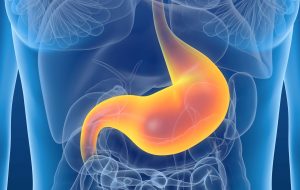Magnesium is a crucial mineral necessary for over 300 biochemical reactions in the body, including muscle function and energy production. When it comes to maintaining optimal muscle health and performance, incorporating magnesium-rich foods into your diet is essential. Let’s dive deeper into these foods and explore how they can enhance your well-being. One of the easiest ways to ensure you’re getting enough magnesium is by incorporating a variety of foods rich in this essential mineral into your daily meals. Beyond just listing these foods, understanding how to prepare them and incorporate them into your diet can make a significant difference. Let’s take a closer look at each of these magnesium-rich foods and discover practical ways to include them in your meals.
Green Leafy Vegetables
1. Spinach
Spinach is a powerhouse of magnesium, with just one cup providing almost 40% of the recommended daily intake. But don’t just think of spinach as a salad base. You can blend it into smoothies for a nutrient-rich breakfast or sauté it with garlic and olive oil as a delicious side dish. For a warm meal, try adding spinach to soups or stews. Not only does it improve magnesium levels, but it also offers iron and vitamin K, supporting overall health.
Practical Tip: For busy mornings, prepare a batch of spinach and egg muffins. Mix eggs, chopped spinach, and your choice of cheese, pour into muffin tins, and bake. These can be refrigerated and reheated for a quick, magnesium-rich breakfast.
2. Swiss Chard
Another leafy green to consider is Swiss chard. It’s often overshadowed by kale, but Swiss chard offers a similar nutritional profile. One cup of cooked Swiss chard contains approximately 150 mg of magnesium. Incorporating it into frittatas or using it as a wrap for fillings instead of traditional tortillas can be a creative way to enjoy this vegetable.
Cooking Tip: To reduce the bitterness sometimes associated with Swiss chard, blanch it quickly in boiling water before sautéing with your favorite spices or garlic. This not only softens the texture but enhances its flavor, making it more palatable for those who are new to this leafy green.
Nuts and Seeds
3. Almonds
Almonds are not only a great source of healthy fats but also contain high levels of magnesium. Snack on a handful of almonds or sprinkle them on top of yogurt or oatmeal to increase your magnesium intake for improved muscle performance and energy production. You can also make your own almond butter or use almond flour in baking to add a magnesium boost to your favorite recipes.
Additional Insight: Almond milk, a popular dairy alternative, also contains some magnesium. However, homemade almond milk will retain more of the nut’s original nutrient content compared to some store-bought versions, which may be diluted or contain added sugars.
4. Pumpkin Seeds
Pumpkin seeds are a delicious snack packed with magnesium, making them an easy way to boost your intake of this essential mineral. Just a quarter cup of pumpkin seeds provides nearly half the daily recommended magnesium intake. Try roasting them with a hint of sea salt or cinnamon for a sweet treat. You can also grind them into a pesto sauce for pasta dishes.
Pro Tip: For an added magnesium boost, try incorporating pumpkin seed oil into your diet. Drizzle it over salads or roasted vegetables for a nutty flavor that complements the dish while providing additional health benefits.
5. Chia Seeds
Chia seeds are small but mighty, packed with magnesium, fiber, and omega-3 fatty acids for overall health and muscle function support. Add chia seeds to smoothies, yogurt, or oatmeal for a nutrient boost that enhances your magnesium intake and promotes optimal muscle health. For a fun twist, make chia seed pudding by soaking them in almond milk overnight and adding your favorite fruits.
Creative Use: Use chia seeds as an egg substitute in baking. Simply mix one tablespoon of chia seeds with three tablespoons of water, let it sit until it forms a gel-like consistency, and use it in recipes for pancakes or muffins.
Fruits
6. Avocado
Avocado is a versatile fruit rich in magnesium and other essential nutrients. Mash avocado on toast, make guacamole, or add slices to salads for a delicious way to incorporate magnesium into your diet and support muscle function. You can also blend avocado into smoothies for a creamy texture or use it as a substitute for mayonnaise in sandwiches.
Insightful Idea: Avocado oil, extracted from the fruit, is another way to incorporate its benefits into your diet. Use it as a cooking oil or drizzle it over cooked dishes for a heart-healthy addition that supports muscle function.
7. Bananas
Along with potassium, bananas are a good source of magnesium, making them a perfect post-workout snack to support muscle recovery and replenish essential minerals for optimal muscle health. Try freezing bananas and blending them into a creamy, dairy-free ice cream or adding them to your morning cereal for a natural sweetener.
Fun Fact: Overripe bananas are perfect for baking. Use them to make banana bread or muffins. Not only do they add natural sweetness, but they also ensure you’re not wasting food while still reaping the magnesium benefits.
Whole Grains
8. Quinoa
Quinoa is a complete protein and a great source of magnesium, making it an excellent addition to any balanced diet. Use quinoa as a base for salads or as a side dish to increase your magnesium intake and support muscle function. It’s also a wonderful alternative to rice or pasta, and it can be used in baking to create protein-rich bread or muffins.
Cooking Technique: Rinse quinoa under cold water before cooking to remove its natural saponin coating, which can taste bitter. Cook it with vegetable broth instead of water for added flavor in your dishes.
9. Brown Rice
Brown rice is a whole grain that offers magnesium and other essential nutrients for sustained energy and muscle health. Incorporate brown rice into your meals as a healthy carbohydrate source to increase your magnesium intake and support muscle function. For a flavorful twist, try making a brown rice pilaf with spices, nuts, and vegetables.
Practical Advice: When cooking brown rice, consider using the absorption method, where you allow the rice to cook until all the water is absorbed. This method helps retain more nutrients compared to draining excess water after cooking.
Proteins
10. Salmon
Salmon not only provides omega-3 fatty acids but also contains magnesium to support muscle function and overall health. Incorporate grilled or baked salmon into your meals regularly to boost your magnesium levels and promote muscle recovery. Pair it with a side of roasted vegetables or a quinoa salad for a balanced meal.
Health Tip: When selecting salmon, opt for wild-caught varieties when possible. They tend to have a higher nutrient profile compared to farmed salmon, providing more benefits for muscle health and overall well-being.
11. Tofu
Tofu is a plant-based source of magnesium and protein, making it a versatile ingredient for vegetarian and vegan diets. Incorporate tofu into stir-fries, salads, or smoothies to increase your magnesium intake and support muscle health. Marinating tofu before cooking can enhance its flavor, making it a delightful addition to any dish.
Cooking Suggestion: Try making a tofu scramble as a breakfast alternative to eggs. Crumble firm tofu in a pan with spices like turmeric, which adds color and flavor, and mix with vegetables for a nutritious start to your day.
Legumes
12. Black Beans
Black beans are not only rich in fiber and protein but also contain significant amounts of magnesium, making them a nutritious addition to meals. Include black beans in soups, salads, or wraps to enhance your magnesium intake and promote muscle function. For a unique recipe, try making black bean brownies for a sweet yet healthy dessert.
Kitchen Hack: Use canned black beans for convenience, but rinse them thoroughly under cold water to reduce sodium content. This keeps them healthy while ensuring you benefit from their nutrients.
13. Edamame
Edamame, or young soybeans, is a tasty snack that provides magnesium along with plant-based protein for muscle support. Enjoy edamame steamed or roasted as a nutritious and convenient snack to boost your magnesium levels and support muscle function. Season them with a sprinkle of sea salt or a dash of chili powder for added flavor.
Meal Prep Idea: For an easy lunch, toss edamame into a cold soba noodle salad. Combine with vegetables and a light sesame dressing for a refreshing dish that’s perfect for warm days and quick meals.
Dairy and Alternatives
14. Greek Yogurt
Greek yogurt is a rich source of protein and contains magnesium to support muscle function and recovery. Enjoy Greek yogurt with fruit or nuts for a balanced snack that helps replenish magnesium levels and promotes muscle health. You can also use it as a base for creamy dressings or smoothies.
Alternative Use: Incorporate Greek yogurt into baking by using it as a substitute for sour cream or mayonnaise. This not only lightens the recipe but also adds a slight tang and moisture, perfect for cakes and quick breads.
Additional Tips for Optimizing Magnesium Intake
- Cooking Methods: How you cook your food can affect its magnesium content. Boiling, for instance, can cause some magnesium to leach into the water. Steaming or sautéing is often better at preserving this essential nutrient.
- Balanced Diet: Ensure a balanced diet that includes a variety of magnesium-rich foods to cover your nutritional needs. This not only supports muscle function but also benefits heart health, bone density, and overall energy levels.
- Supplements: If you’re struggling to get enough magnesium through diet alone, consider speaking with a healthcare professional about supplements. However, whole foods should always be your first choice.
- Avoid Magnesium-Depleting Substances: Excessive alcohol, caffeine, and stress can deplete magnesium levels. Mindful consumption of these can help maintain optimal magnesium levels.
- Hydration: Staying hydrated is essential for muscle function and can help your body utilize magnesium more efficiently.
- Mindful Eating: Pay attention to how your body feels in response to your diet. If you experience frequent muscle cramps or fatigue, it may be a sign to increase your magnesium intake.
- Choose Organic: When possible, opt for organic produce, which may have higher mineral content due to healthier soil practices. This choice supports not only your health but also sustainable farming practices.
Incorporating these foods and tips into your daily routine can make a substantial difference in your magnesium intake, muscle function, and overall health. Remember, a varied diet rich in whole foods is key to maintaining optimal wellness. By being mindful of your food choices and preparation methods, you can significantly enhance your magnesium intake and support a healthier, more active lifestyle.



